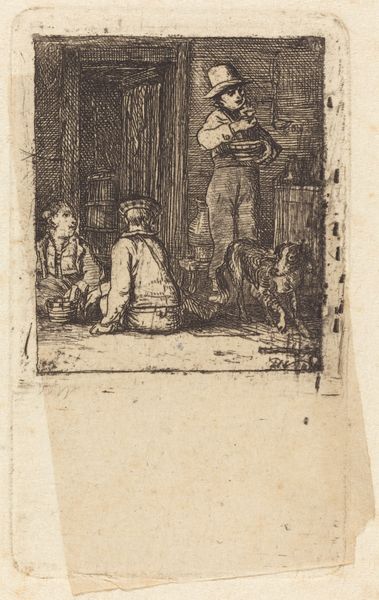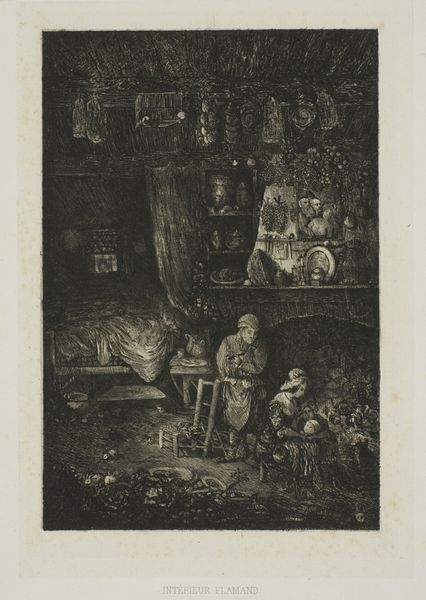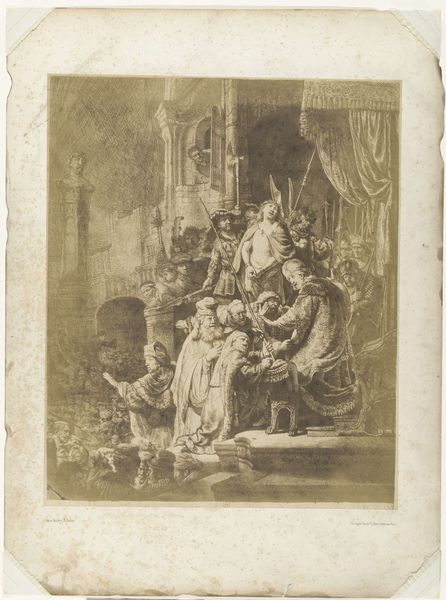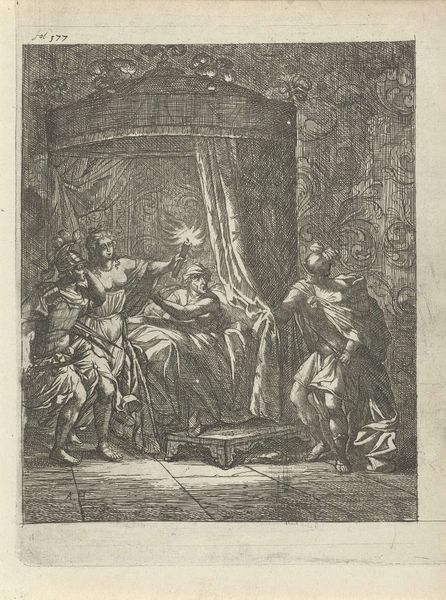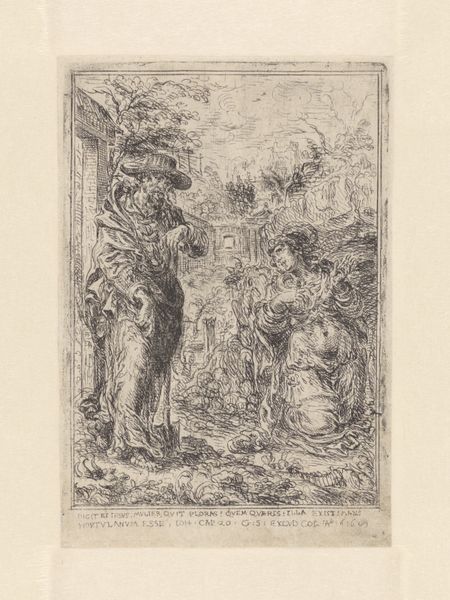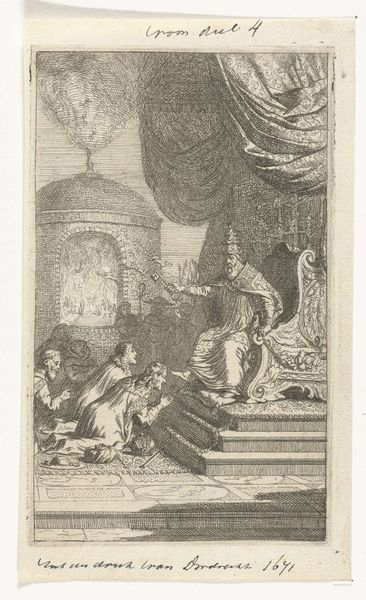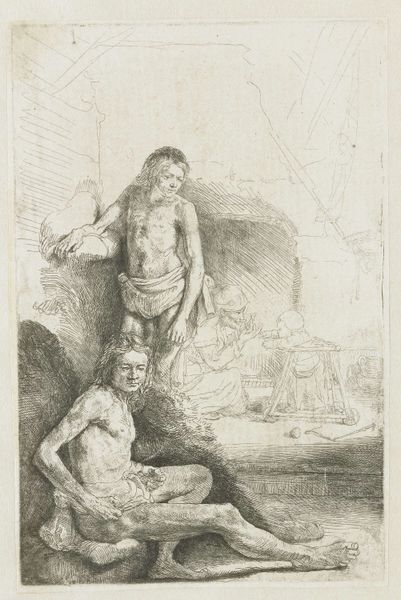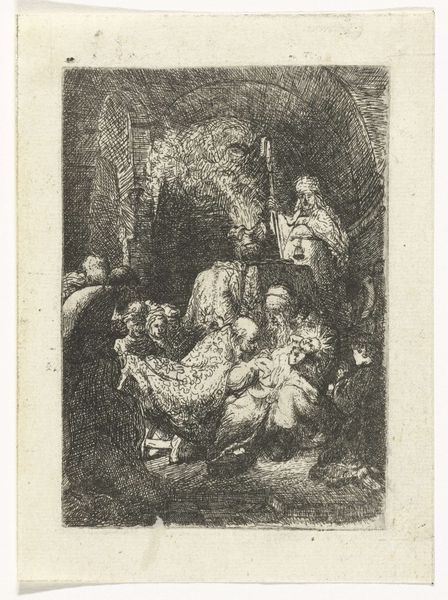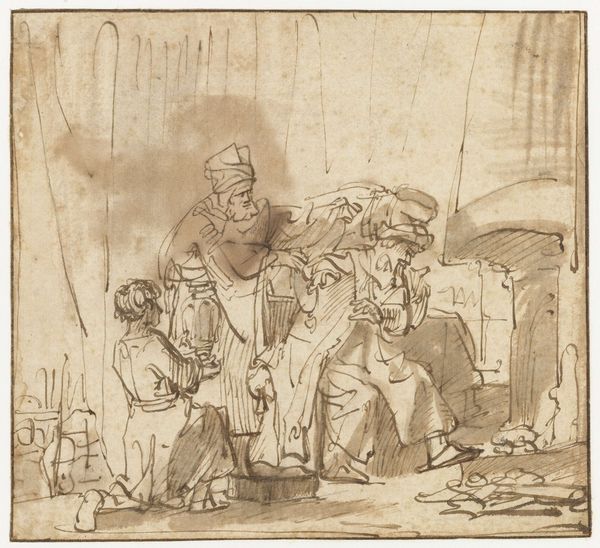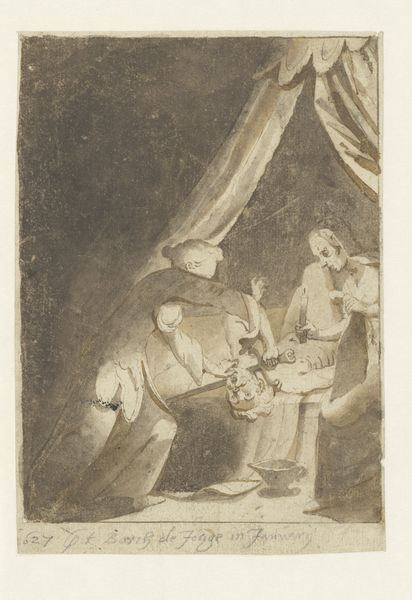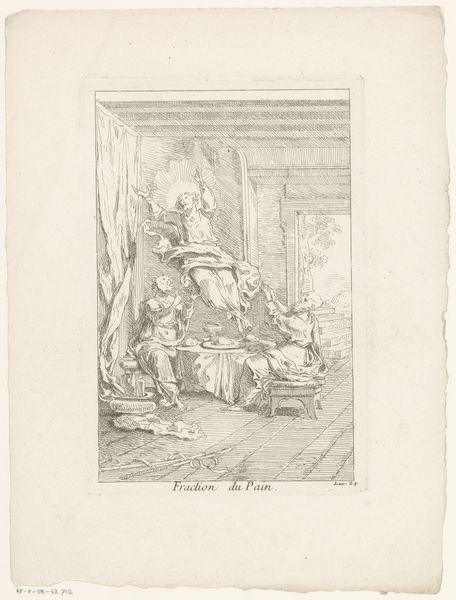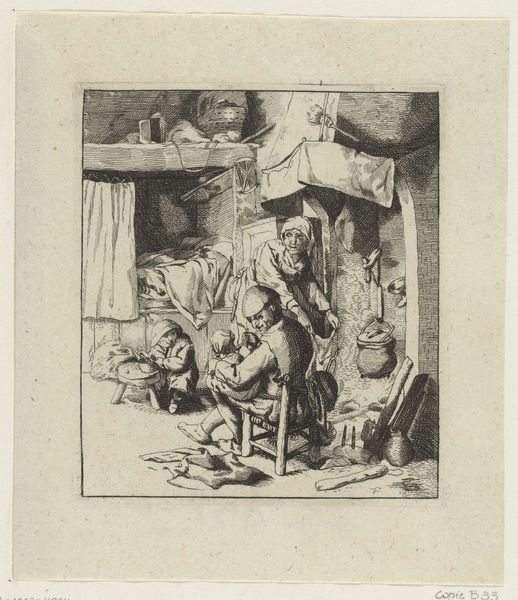
De beroemde Perzische geneesheren Iston, Pouffamatus, Cracozie en Transmouffe onderzoeken de stoelgang van koning Darius na de slag van Arabela 1886
0:00
0:00
Copyright: Public Domain: Artvee
James Ensor created this etching, "The famous Persian doctors Iston, Pouffamatus, Cracozie and Transmouffe examine the bowel movement of King Darius after the battle of Arabela," sometime in the late 19th or early 20th century. It's a satirical piece playing on historical themes. Ensor, working in Belgium, was deeply critical of societal norms and institutions. Here, he uses a scene seemingly set in ancient Persia to comment on contemporary medical practices and perhaps, more broadly, on the authority figures of his own time. The scatological humor is typical of Ensor's transgressive approach, challenging the viewer's expectations of what is considered an appropriate subject for art. Consider the cultural context: Belgium, in Ensor's era, was a society grappling with rapid industrialization and social change. Ensor's art often reflects a sense of unease and a questioning of established values. To fully understand Ensor, one might explore the history of satire in art, as well as the social and political climate of Belgium during his lifetime. The resources for such investigations are readily available in libraries and archives. By studying the institutions and societal norms of his time, we gain a richer appreciation of Ensor's daring and provocative work.
Comments
No comments
Be the first to comment and join the conversation on the ultimate creative platform.
